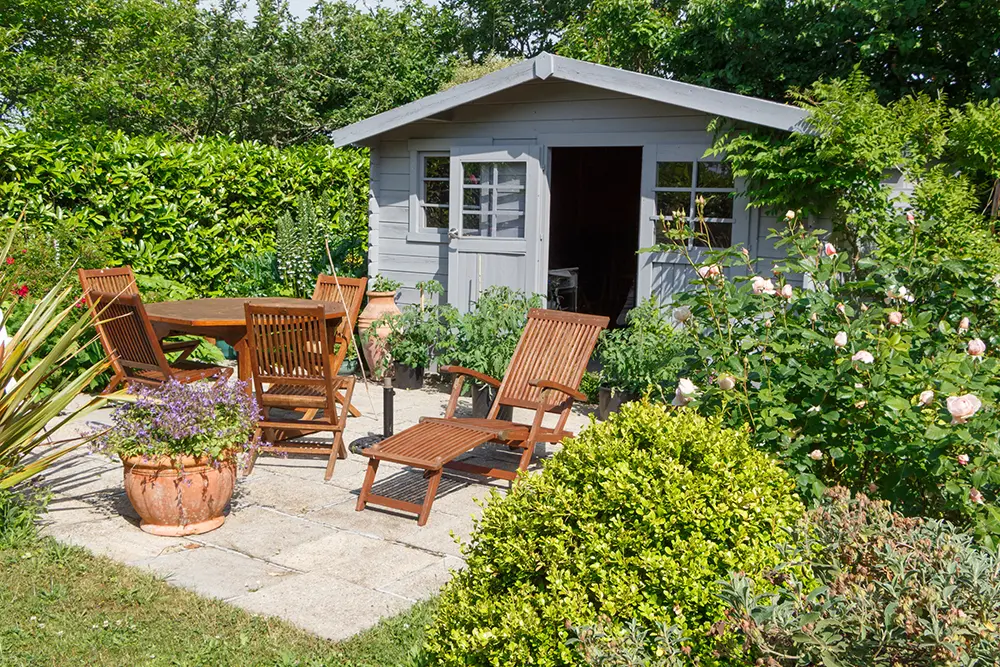You may be surprised to learn that there are a wide variety of things you can do to your home without the need for planning permission.
From simply adding a garden space all the way to installing a swimming pool, we will take you through our top 10 things you can do to your house/garden without planning permission.
It should be noted that while all of these projects fall under permitted development, you should still check with your local authority. This is because the same rules won’t apply to every house in every part of the country.
1) Loft conversion
Most of the time, you will not need to get planning permission to create a loft conversion.
There are however a few criteria’s that you will need to meet such as the cubic content con not exceed 40 cubic metres for a terraced house and 50 cubic metres for detached properties. You can also install dormer windows for added room. However, they must not sit higher than the existing roof or sit forward of the roof plane.
There may be a few exceptions to this rule such as in city centres such as London, or conservation areas so we would always recommend checking first before taking out any works on your house.
2) Conservatory
This may be surprising to some, but the majority of the time installing a conservatory does not require planning permission. A conservatory will fall into the same category as s single story extension.
Generally speaking, you will only need to make sure that the conservatory is attached to the original building and it does not exceed 4 metres in depth of a detached house or 3 metres in-depth on a semi-detached or terrace house.
3) Garage conversion
A garage conversion is one of the easiest ways of creating more space within your home. as you will not be increasing your house’s overall footprint, there is rarely any reason why you cannot convert a connected garage.
You will usually be able to add windows or skylights as well as better access, but we recommend speaking with an architect to get all of this information beforehand.
4) Single story extension
A single-story conversion falls under the same rules as a conservatory. You can build both on the sides as well as the back of your house but there are different rules depending on where you get it.
If you plan on a rear extension you may extend it to 4 metres deep from the original dwelling on a detached house and 3 metres on others. Side of house expansions are allowed to be up to half of the width of the original dwelling.
You’re also restricted to 4 metres in height and the materials must also match the building as much as possible.
5) 2-storey extension
You can even add a 2 storey extension to your house without planning permission. Again, there are a few rules to this but generally speaking they are fairly simple.
A 2 storey extension can only be added to the rear of the house. It must not exceed 3 metres deep or be within 7 metres of the rear boundary. This includes the addition of a second storey extension being placed upon an already existing single-storey extension.
6) Summer house/outbuilding/shed
These will also into a similar category as a single story extension but with a few tweaks.
The space must be no bigger than 30 square metres and must not take up more than 50% of the total space within your garden. It must be a single-storey building with a maximum eaves height of 2.5 metres and a maximum high of 4 metres for a dual pitched roof or 3 metres for other roofs.
The space must not be used for accommodation – you will need to seek planning permission for this.
7) Adding a porch
A porch is a very simple and easy way of creating a little extra space and a lovely aesthetic to your home. They rarely need any kind of permission so long as they fit the following criteria.
- The porch must not be any taller than 3 metres in height
- The floor area does not exceed 3 metres squared
- Must be 2 metres away from any boundary or highway
8) Sky Lights / Roof Lights
New roof lights or skylights will not normally require an application for planning permission providing:
- They do not protrude more than 150 mm beyond the plane of the roof slope
- They are no higher than the highest part of the roof
- If they are in side elevation roof slope they must be obscure-glazed and either non opening or more than 1.7 metres above the floor level
However, if additional volume is created it may be treated as an extension and separate rules will apply.
If you live in a listed building or designated area (conservation area, national park, area of outstanding natural beauty, etc…) you should check with your Local Planning Authority before carrying out any work.
9) Convert your basement
You may not have enough space to extend above ground, so why not convert your basement! Instead of using that space for storage, you can utilise it to its full potential and create a beautiful living space.
All you need to do is damp-proof it and you are ready to turn it into what ever you want! This is a great way of giving you extra room without losing any garden space.
However, it should be noted that if you do not have a basement and instead want to create one, this will require planning permission.
10) Add a swimming pool
Perhaps you want to be a bit more lavish and add a swimming pool to your garden. Believe it or not, you don’t generally need to gain planning permission to install a swimming pool either!
The only thing to be mindful of is that the swimming pool cannot take up more than 50% of your garden. Apart from that rule, you generally do not need to get planning permission.
So there we have it, our top 10 things you can do without planning permission!
We have tried to be as accurate as possible for informing you of what you can do under permitted development. However, you should always check with your local planning authority to ensure you do not need planning permission.
You may also wish to get a certificate of lawful development. This ensures that the project falls under permitted development should you wish to sell the property in future. This can be obtained through your local authority.
To learn more about planning development, head to www.gov.uk or Planning Portal to get the most up to date information.
We hope you enjoyed this post. If you have any other tips or advice, please share them in the comments below. We love hearing from you!




















